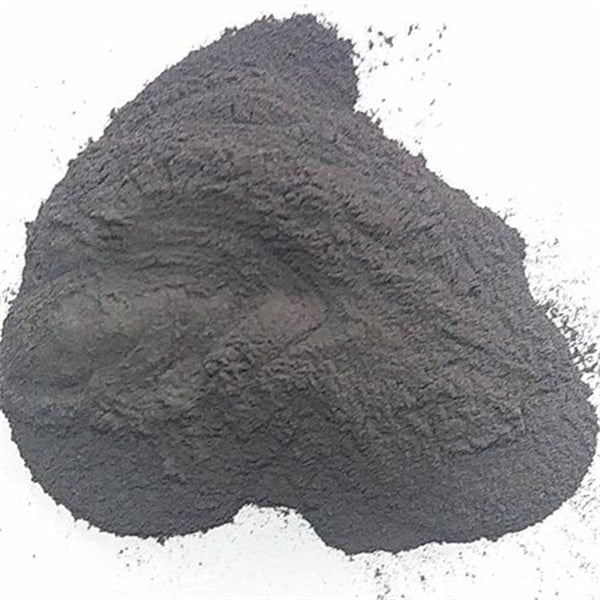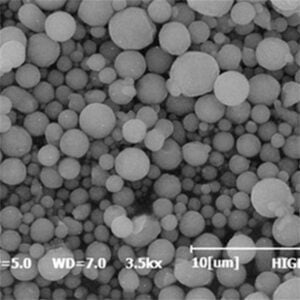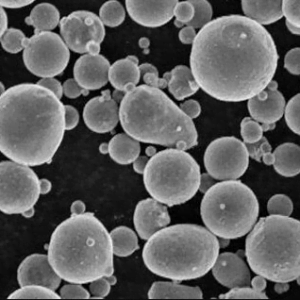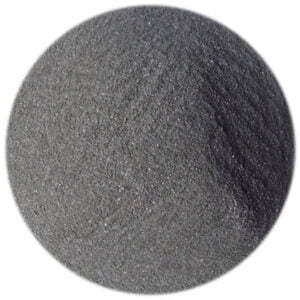Molybdenum Powder
Table of Contents
Molybdenum powder is a versatile material with unique properties that make it useful across various industries. This article provides an overview of molybdenum powder along with details on its composition, properties, applications, suppliers, and more.
Overview of Molybdenum Powder
Molybdenum powder is a fine gray powder made up of molybdenum metal particles. It offers high strength, corrosion resistance, thermal conductivity, and lubricity properties that lend themselves well for use as an alloy additive, a pigment, a catalyst, an electrode material, and other applications.
Key details about molybdenum powder:
- Composition – Nearly pure molybdenum metal, often with small amounts of oxygen and nitrogen
- Particle sizes – Ranging from 1 micron to 100s of microns
- Purity grades – From technical grade to high purity grade
- Production methods – Hydrogen reduction, plasma spheroidization, electrolytic processes
- Morphology – Spherical, flaked, angular, dendritic particles
- Tap density – Around 5 g/cm3
- Packaging – Drums, pails, bags with inert gas purging
With its versatility, molybdenum powder is a vital material across metallurgy, chemistry, energy, and various other industries.

Molybdenum Powder Composition
Molybdenum powder can come in different compositions based on the production method and intended use. Here are details on the typical composition:
| Component | Composition Range |
|---|---|
| Molybdenum | 99% to 99.99% |
| Oxygen | Up to 0.5% |
| Carbon | Up to 0.1% |
| Nitrogen | 0.05% to 0.5% |
| Hydrogen | 0.003% to 0.3% |
| Iron | Up to 0.1% |
| Silicon | Up to 0.1% |
| Phosphorus | Up to 0.01% |
| Sulfur | Up to 0.01% |
- High purity grades have molybdenum content exceeding 99.9% with strict control on interstitials like C, O, N.
- Technical grades are less pure with more variability in composition.
- Alloy grades also available with additions like chromium, copper, or tungsten.
Controlling impurity levels is crucial for certain applications, especially catalysis, while alloying enhances properties like oxidation resistance.
Properties of Molybdenum Powder
Molybdenum powder stands out due to its impressive combination of strength, workability, thermal properties, and corrosion resistance.
| Property | Details |
|---|---|
| Melting Point | 2610°C, highest among pure metals |
| Density | 10.22 g/cm3, quite high |
| Electrical Resistivity | 5.2 microohm-cm, conductivity better than steel |
| Thermal Conductivity | 138 W/mK, heat transfer superior to common metals |
| Coefficient of Thermal Expansion | 4.8 x 10<sup>-6</sup> /K |
| Young’s Modulus | 329 GPa, implies high stiffness |
| Poisson’s Ratio | 0.31 |
| Mohs Hardness | 5.5 |
| Tensile Strength | 550 MPa |
- Maintains strength across a wide temperature range from cryogenic to over 2000°C.
- Resists creep deformation better than other refractory metals like tungsten or tantalum.
- High lubricity – Useful as a dry lubricant similar to graphite.
- Relatively inert, especially against hydrogen embrittlement unlike titanium alloys.
This impressive materials property profile of molybdenum powder makes it suitable for high performance applications.
Applications of Molybdenum Powder
With its versatile properties, molybdenum powder finds use across a diverse range of applications:
Metallurgy and Alloying
- Alloy additive to impart strength and corrosion resistance to nickel, cobalt and steel based superalloys.
- Crucial ingredient in superalloys used in jet engine and land-based turbine components.
- Alloying addition in tool steels, stainless steels, valve steels, heat resisting alloys etc.
Pigments and Metallurgy
- Used to manufacture molybdate based inorganic pigments and corrosion inhibiting pigments.
- Pigment compounds like Lead Molybdate Red and Molybdate Orange are widely used colorants.
Catalysts
- Molybdenum compounds act as catalysts during hydroprocessing of petroleum and in production of organic chemicals.
- Promotes desulfurization, denitrogenation and other upgrading reactions.
Lubricant Additive
- Molybdenum disulfide (MoS2) produced from molybdenum powder is an excellent dry lubricant.
- Used as an anti-friction additive in greases and engine oils.
Electronics
- Molybdenum front contacts used in thin film solar cells enhance efficiency.
- Sputtering targets to deposit molybdenum metal layers in semiconductors and flat panel displays.
With more innovation, molybdenum powder will find expanded use across even more applications in the future.
Grades and Specifications
Molybdenum powder is available across various particle size distributions, purity levels, morphologies and other quality metrics tailored to end use requirements:
| Parameter | Details |
|---|---|
| Particle Size | 1 micron to 150 microns |
| Purity Grades | Technical, Pure, Ultra High Purity |
| Tap Density | Up to 5 g/cm3 |
| Apparent Density | Approximately 2.5-3 g/cm3 |
| Specific Surface Area | 0.05 to 0.6 m2/g |
| Oxygen Content | 100 ppm to 5000 ppm |
| Carbon Content | 10 ppm to 100 ppm |
| Hydrogen Content | 1 ppm to 30 ppm |
| Nitrogen Content | 20 ppm to 1000 ppm |
| Morphology | Angular, spherical, flaked, dendritic |
| Production Method | Electrolytic, H2 reduction, plasma spray |
| Mo Content | 99% to 99.999% |
- Particle size distribution and morphology affect packing density, flowability, and performance.
- Purity requirements depend on application – highest for electronics, lowest for metallurgy.
- Chemistry and powder properties tailored to needs using production method.
Molybdenum powder manufacturers offer various stock grades along with customization as per end user specifications.
Global Suppliers and Pricing
The global market size for molybdenum metal powder is estimated at around 50,000 tons annually. Leading molybdenum powder manufacturers and suppliers include:
| Company | HQ Location |
|---|---|
| Molymet | Chile |
| Freeport-McMoRan Inc. | USA |
| JDC Molybdenum | China |
| Midwest Tungsten | USA |
| Thompson Creek Metals | USA |
| Jinduicheng Molybdenum | China |
| China Molybdenum Co Ltd. | China |
| Thompson Creek Metals | USA |
Price Range: Between $25 per kg to $100 per kg based on grade, particle size, morphology, purity etc.
Geographic Supply: Chile and China are major producers. USA also has notable capacity through freeport molybdenum mines and processing.
Factors like moly prices, demand swings in alloy and chemical sectors, and trade tensions influence molybdenum powder rate fluctuations. Supply chain constraints arising during black swan events also affect availability. Long term agreements and inventory management are key aspects for buyers.
Comparison Between Production Methods
Molybdenum powder can be produced through different processes – each with their own pros and cons:
| Parameter | Hydrogen Reduction | Plasma Spheroidization | Electrolytic |
|---|---|---|---|
| Capital Cost | Low | High | Medium |
| Operating Cost | Low | High | Medium |
| Particle Size Control | Medium | Excellent | Poor |
| Morphology | Angular, flaky | Spherical | Dendritic, porous |
| Purity | Moderate | Excellent | Low |
| Scale Up Feasibility | Excellent | Poor | Medium |
- Plasma spheroidization ensures spherical shape and process purity but throughput is low.
- Electrolytic technique gives high volume but purity issues and lack of shape control.
- Hydrogen process balances cost, quality and productivity for most applications.
Technology selection depends on factors like target particle shape, impurity tolerance, production volume, powder characteristics etc.
Pros and Cons of Using Molybdenum Powder
| Advantages | Disadvantages |
|---|---|
| Outstanding high temperature strength | Relatively expensive |
| Excellent corrosion resistance | Limited global production capacity |
| High thermal conductivity | Susceptible to oxygen contamination |
| Versatile material properties | Lower ductility than other metals |
| Multiple production methods | Brittle oxide forms if overheated in air |
| Established use in alloys | Toxic molybdenum oxides during powder processing |
| Growing use as a catalyst | Polluting sulfides formed during lubricant use |
Molybdenum powder delivers an impressive mix of physical properties not matched by alternatives. This has to be balanced against higher pricing and availability issues. Proper precautions during powder handling and end use phase also assume importance.

FAQs
Q. What are the different grades of molybdenum powder?
A. Common molybdenum powder grades classified by purity include technical, pure molybdenum and ultra high purity molybdenum powder. Grades are also differentiated by particle size distribution, specific surface area, tap density and powder morphology.
Q. Does molybdenum powder oxidize quickly in air?
A. While bulk molybdenum metal has excellent corrosion resistance, fine molybdenum powder particles can get oxidized during prolonged air exposure at higher temperatures above 100°C. Maintaining an inert atmosphere is advised to prevent loss of material.
Q. What is the difference between molybdenum powder and molybdenum oxide powder?
A. Molybdenum powder refers to particles of metallic molybdenum while molybdenum oxide powder consists of molybdenum dioxide or MoO2 particles. Moly oxide has different applications compared to the metal powder.
Q. Is molybdenum powder flammable?
A. Like most metals, molybdenum powder is not intrinsically flammable. But fine powder can burn when subject to an ignition source under favorable conditions of particle size, dispersion, and atmosphere. Risk is higher in oxygen enriched atmospheres.
Q. What particle size of molybdenum powder is best for thermal spraying?
A. For most thermal spray applications like arc spraying and high velocity oxy-fuel deposition, a particle size range between 10-45 microns is recommended for molybdenum powder feeds. Finer particles under 10 um may lead to problems during feeding while coarser powder above 53 microns affects coating quality.
Conclusion
With its outstanding high temperature properties, excellent corrosion resistance and versatile characteristics, molybdenum powder acts as an crucial material across a wide array of metallurgy, chemical, electronics and energy applications.
This article provided a detailed overview of molybdenum powder composition, properties, applications, grades, suppliers, pricing, production methods and pros/cons to inform readers.
The data indicates moly powder delivers an impressive mix of characteristics not matched by alternatives. Interest in molybdenum powder is projected to be sustained in the long term due to criticality for emerging technologies and shifting material requirements.
Share On
MET3DP Technology Co., LTD is a leading provider of additive manufacturing solutions headquartered in Qingdao, China. Our company specializes in 3D printing equipment and high-performance metal powders for industrial applications.
Inquiry to get best price and customized Solution for your business!
Related Articles
About Met3DP
Recent Update
Our Product
CONTACT US
Any questions? Send us message now! We’ll serve your request with a whole team after receiving your message.

Metal Powders for 3D Printing and Additive Manufacturing
COMPANY
PRODUCT
cONTACT INFO
- Qingdao City, Shandong, China
- [email protected]
- [email protected]
- +86 19116340731

















